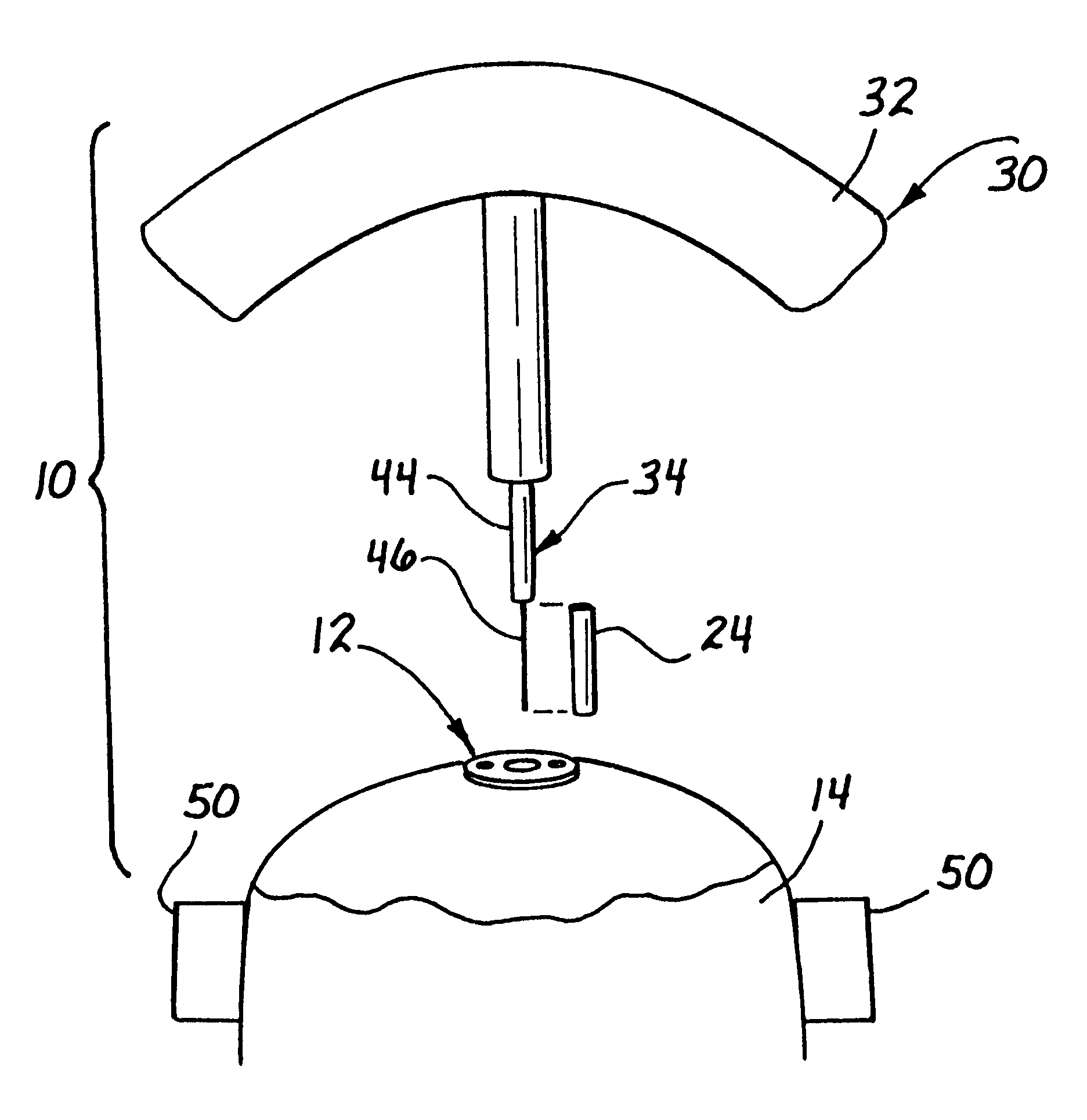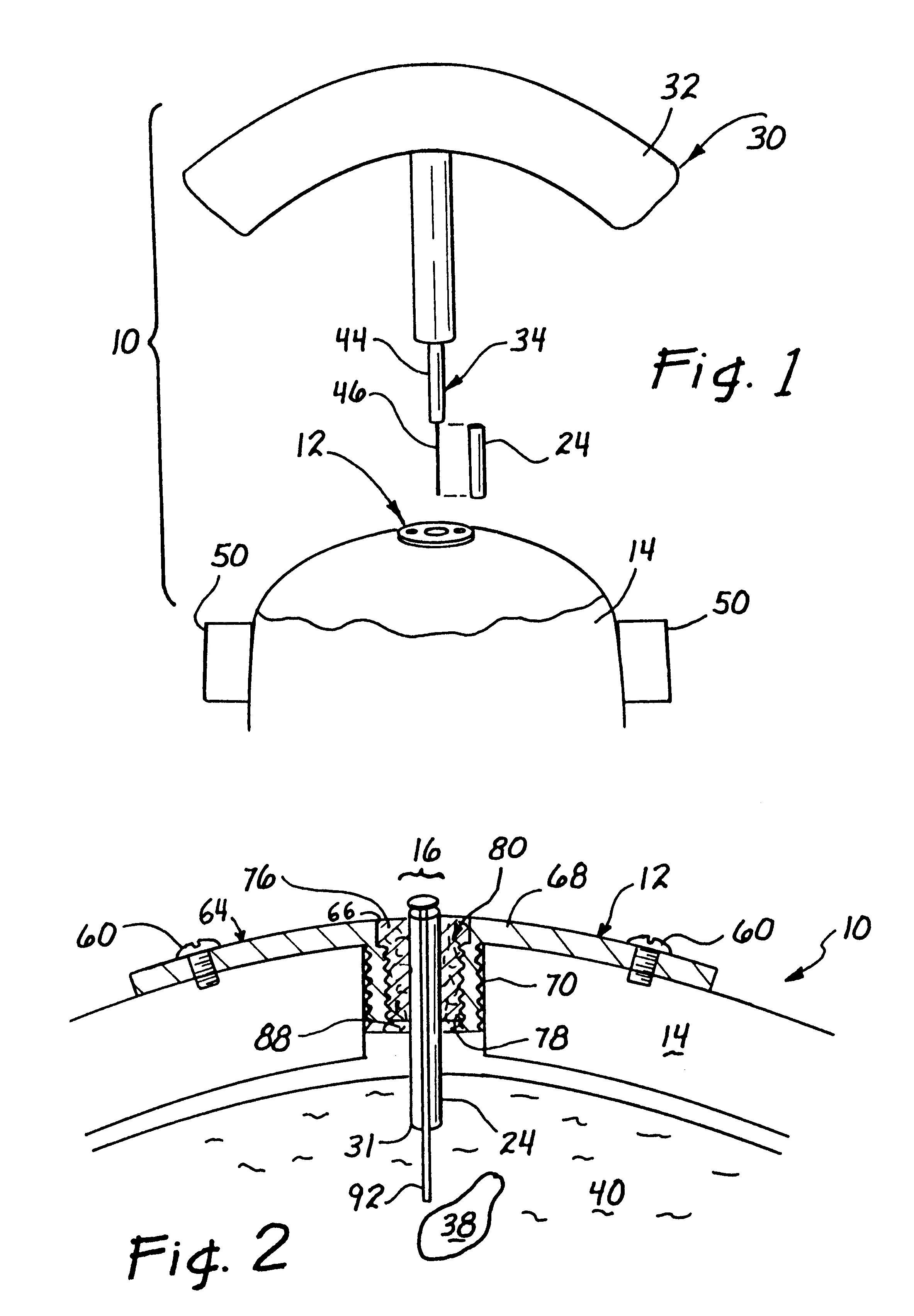Non-scatterable, radio-opaque material for medical imaging applications
a radio-opaque material and non-scatterable technology, applied in the field of medical devices, can solve the problem of prior-art stereotactic surgical procedures and certain margins of error in localization
- Summary
- Abstract
- Description
- Claims
- Application Information
AI Technical Summary
Benefits of technology
Problems solved by technology
Method used
Image
Examples
Embodiment Construction
The present invention discloses new materials for use in stereotaxic procedures, as well as for use in any other type of imaging procedure, such as an MRI procedure, a CAT scan procedure or an X-ray procedure. In accordance with the present invention, probes and pointers suitable for use in imaging procedures are constructed of carbon fiber compositions as set forth herein. The surgeon can aim for any point within a mass or lesion, or can direct the surgery by using a series of stereotaxic points to outline the abnormal area. A carbon-fiber composition guide cannula can then be inserted into the target organ and used to guide probes, electrodes, drug delivery, etc. to the target site within the organ. The accuracy of placement of the guide cannula may subsequently be verified through a second radio-imaging scan, such as a CAT scan or MRI scan, in accordance with one aspect of the present invention. The materials of the present invention may also be used, for example, in endoscopic a...
PUM
 Login to View More
Login to View More Abstract
Description
Claims
Application Information
 Login to View More
Login to View More - R&D
- Intellectual Property
- Life Sciences
- Materials
- Tech Scout
- Unparalleled Data Quality
- Higher Quality Content
- 60% Fewer Hallucinations
Browse by: Latest US Patents, China's latest patents, Technical Efficacy Thesaurus, Application Domain, Technology Topic, Popular Technical Reports.
© 2025 PatSnap. All rights reserved.Legal|Privacy policy|Modern Slavery Act Transparency Statement|Sitemap|About US| Contact US: help@patsnap.com


